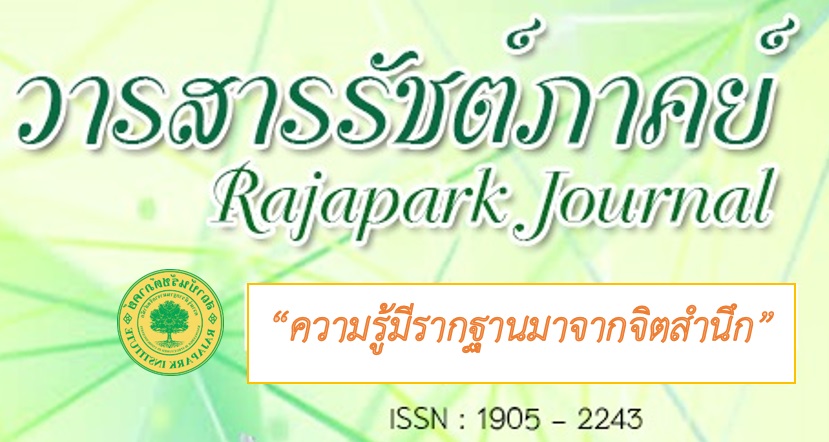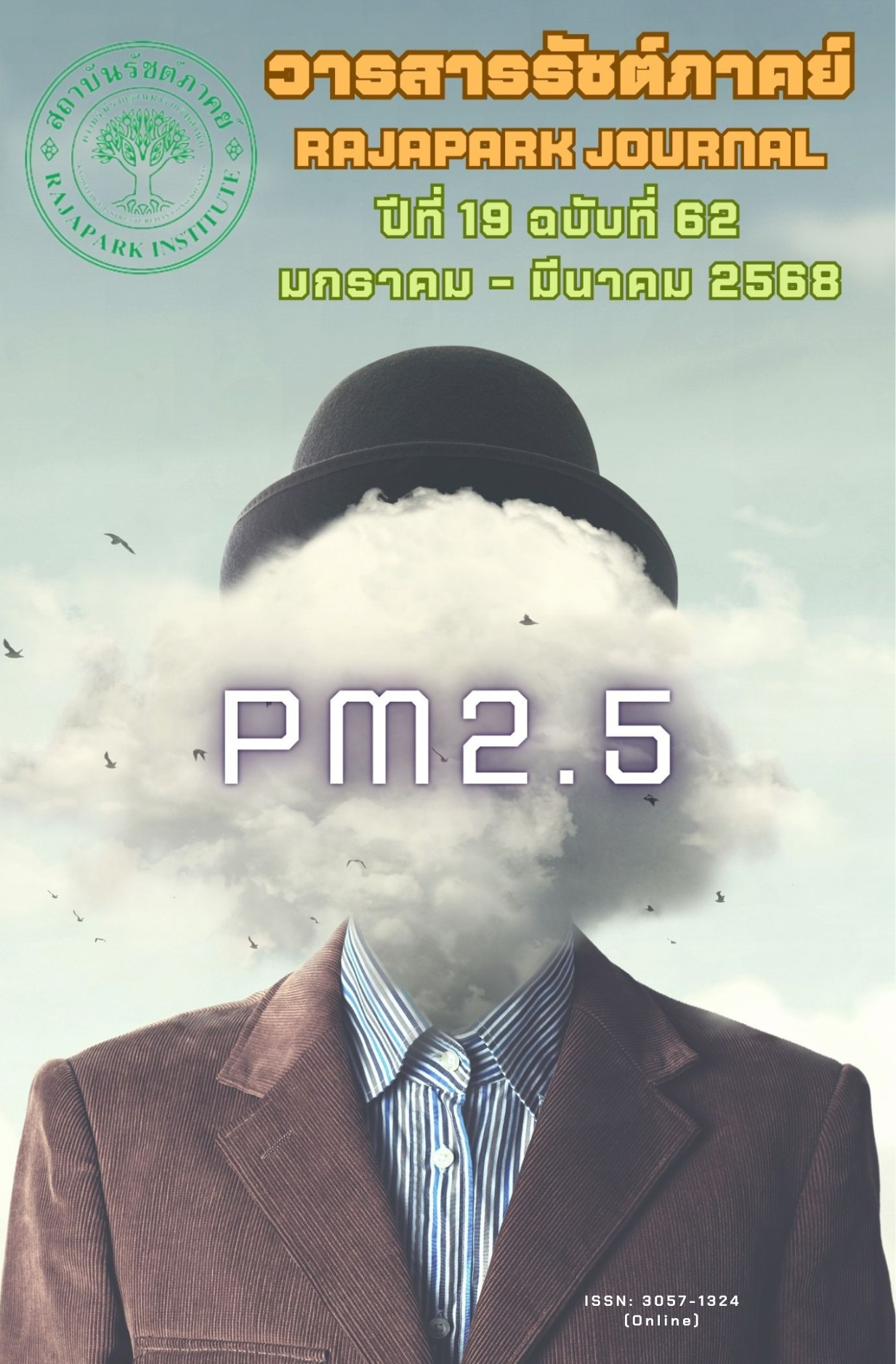Impacts of Work Connectivity During Non-Office Hours on Employee’s Attitudes and Behaviors: A Comparative Case between General Staffs and Executives in Educational Institutions in Shandong Province, China
Main Article Content
บทคัดย่อ
This study investigates the impact of work connectivity during non-office hours on the attitudes and behaviors of general staff and executives in educational institutions in Shandong Province, China. Utilizing the Conservation of Resources (COR) theory and the Job Demand-Resource (JD-R) model, the research assesses the influence of digital work connectivity on various outcomes such as role overload, quality of work life, employee engagement, and counterproductive work behavior. A survey was conducted, and data from 626 valid questionnaires were analyzed using SPSS and AMOS software. The results indicated that work connectivity during non-office hours positively influences role overload and counterproductive work behavior, while it negatively affects the quality of work life and employee engagement for both general staff and executives. However, the impact was more pronounced in general staff. The study also found that information technology and high identity awareness had different impacts on work connectivity during non-office hours for the two groups. The research concludes that while work connectivity is inevitable, its management is crucial to mitigate its negative effects on employees. The study provides insights for policymakers and managers to better understand and manage the implications of work connectivity outside regular working hours.
Article Details

อนุญาตภายใต้เงื่อนไข Creative Commons Attribution-NonCommercial-NoDerivatives 4.0 International License.
ทัศนะและความคิดเห็นที่ปรากฏในวารสาร ถือเป็นความรับผิดชอบของผู้เขียนบทความนั้น และไม่ถือเป็นทัศนะและความรับผิดชอบของกองบรรณาธิการ
เอกสารอ้างอิง
Adisa, T. A., Gbadamosi, G., & Osabutey, E. L. C. (2017). What happened to the border? The role of mobile information technology devices on employees’ work-life balance. Personnel Review, 46(8), 1651-1671. DOI:10.1108/PR-08-2016-0222
Akinwale, O. E., Edegwa, S. K., & Ofuani, A. B. (2024). Individual and organizational determinants of work-life balance and quality of work-life (qwl) among nurses and pharmacists in government hospitals. African Journal of Economics and Business Research, 3(2). DOI:10.4314/ajebr.v3i2.3
Albert, S., Ashforth, B. E., & Dutton, J. E. (2000). Organizational identity and identification: charting new waters and building new bridges. Academy of Management Review, 25(1), 13-17. DOI:10.5465/amr.2000.2791600
Cascio, W. F., & Montealegre, R. (2016). How technology is changing work and organizations. Annual Review of Organizational Psychology and Organizational Behavior, 3(3), 349-375. https://doi.org/10.1146/annurev-orgpsych-041015-062352
Cheung, V. K. L. (2024). Practical considerations of workplace well-being management under post-pandemic work-from-home conditions. International Journal of Environmental Research and Public Health, 21(7). DOI:10.3390/ijerph21070924
Christopher Westland, J. (2010). Lower bounds on sample size in structural equation modeling. Electronic Commerce Research and Applications, 9(6), 476-487. https://doi.org/10.1016/j.elerap.2010.07.003
Derks, D., & Bakker, A. B. (2014). Smartphone use, work–home interference, and burnout: A diary study on the role of recovery. Applied Psychology, 63(3), 411-440. https://doi.org/10.1111/j.1464-0597.2012.00530.x
Ekpechi, S. C., & Igwe, A. A. (2023). Influence work-life balance on employee performance in commercial banks in Enugu State. American Interdisciplinary Journal of Business and Economics (AIJBE), 10(4), 14-33. doi:10.5281/zenodo.10137856
French, K. A., Allen, T. D., & Kidwell, K. E. (2022). When does work-family conflict occur?. Journal of Vocational Behavior, 136, 103727. https://doi.org/10.1016/j.jvb.2022.103727
Hall, D. (1988). Measurements of the mean force on a particle near a boundary in turbulent flow. Journal of Fluid Mechanics, 187, 451–466. DOI:10.1017/S0022112088000515
Hobfoll, S. E. (1989). Conservation of resources: A new attempt at conceptualizing stress. American Psychologist, 44, 513–524. DOI:10.1037/0003-066X.44.3.513
Hobfoll, S. E., & Freedy, J. (2017). Conservation of resources: A general stress theory applied to burnout. In Professional burnout (pp. 115-129): Routledge.
Kahn, W. A. (1990). Psychological conditions of personal engagement and disengagement at work. Academy of Management Journal, 33(4), 692-724. DOI:10.5465/256287
Kammeyer-Mueller, J. D., Simon, L. S., & Judge, T. A. (2016). A head start or a step behind? Understanding how dispositional and motivational resources influence emotional exhaustion. Journal of Management, 42(3), 561-581. DOI:10.1177/0149206313484518
Karatepe, O. M. (2013). The effects of work overload and work-family conflict on job embeddedness and job performance. International Journal of Contemporary Hospitality Management, 25(4), 614-634. DOI:10.1108/09596111311322952
Lebrón, M., Tabak, F., Shkoler, O., & Rabenu, E. (2018). Counterproductive work behaviors toward organization and leader-member exchange: The mediating roles of emotional exhaustion and work engagement. Organization Management Journal, 15(4), 159-173. DOI:10.1080/15416518.2018.1528857
Macijauskienė, I., & Stankevičiūtė, Ž. (2022). Digital connectivity for work after hours amid COVID-19: The case of the public sector in Lithuania. Visuomenės Saugumas ir Viešoji Tvarka. DOI:10.13165/PSPO-22-29-36
Moors, A. (2020). Appraisal theory of emotion. In V. Zeigler-Hill & T. K. Shackelford (Eds.), Encyclopedia of personality and individual differences (pp. 232-240). Cham: Springer International Publishing.
Onorato, R. S., & Turner, J. C. (2015). The “I,” the “me,” and the “us”: The psychological group and self-concept maintenance and change. In Individual self, relational self, collective self (pp. 147-170): Psychology Press.
Park, Y., Fritz, C., & Jex, S. M. (2011). Relationships between work-home segmentation and psychological detachment from work: The role of communication technology use at home. Journal of Occupational Health Psychology, 16(4), 457-467. DOI:10.1037/a0023594
Ragsdale, J. M., & Hoover, C. S. (2016). Cell phones during nonwork time: A source of job demands and resources. Computers in Human Behavior, 57, 54-60. https://doi.org/10.1016/j.chb.2015.12.017
Schaufeli, W. B., Taris, T. W., & Van Rhenen, W. (2008). Workaholism, burnout, and work engagement: Three of a kind or three different kinds of employee well-being? Applied Psychology, 57(2), 173-203. https://doi.org/10.1111/j.1464-0597.2007.00285.x
Simosi, M., Rousseau, D. M., & Daskalaki, M. (2015). When Career Paths Cease to Exist: A qualitative study of career behavior in a crisis economy. Journal of Vocational Behavior, 91, 134-146. https://doi.org/10.1016/j.jvb.2015.09.009
van Zoonen, W., Sivunen, A., & Rice, R. E. (2020). Boundary communication: How smartphone use after hours is associated with work-life conflict and organizational identification. Journal of Applied Communication Research, 48(3), 372-392. DOI:10.1080/00909882.2020.1755050
van Zoonen, W., Treem, J. W., & Sivunen, A. E. (2023). Staying connected and feeling less exhausted: The autonomy benefits of after-hour connectivity. Journal of Occupational and Organizational Psychology, 96(2), 242-263. https://doi.org/10.1111/joop.12422
Wang, B., Liu, Y., & Parker, S. K. (2020). How does the use of information communication technology affect individuals? A work design perspective. Academy of Management Annals, 14(2), 695-725. DOI:10.5465/annals.2018.0127


